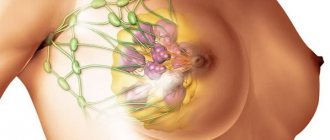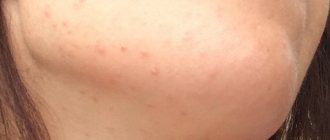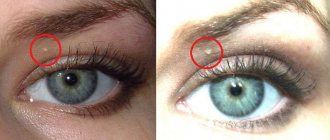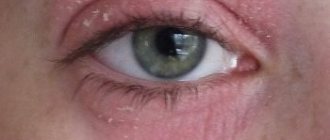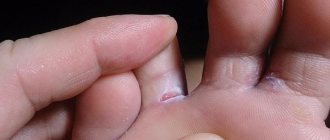Reasons for plastic surgery
The problem regarding the appearance of the toes is their excessive length and discrepancy in size relative to each other. More often, girls with “Greek” feet go to the doctor. With this feature, the second finger becomes too prominent compared to the others. Excessive length also occurs in any of its neighbors.
And although the feet are not the most visible part of the body, patients tend to undergo shortening surgery more often for aesthetic reasons. There are other reasons to contact a surgeon with a problem:
- inability to wear high-heeled, open-toed or narrow-toed shoes due to physical discomfort;
- constant injury to the finger from any shoes;
- congenital anomalies of phalanges, bones, soft tissues;
- deformities of the fingers (hammertoe, valgus), arising for various reasons.
We recommend reading about laser correction of ingrown toenails. You will learn about the reasons for the formation of an ingrown nail, the advantages of laser correction of the defect, the procedure, and its cost. And here is more information about how to correct crooked legs in children and adults.
Cost of Precise Nail implantation at Top Assuta
In Israel, installation of a magnetic intramedullary telescopic rod will cost patients 30-50% less than in Western Europe and America. How the Preciсe Nail leg lengthening method is used in Israel, prices for the operation - you can get answers to these questions from our consultants. But the exact cost is determined only after research in the clinic.
Preciсe Nail leg lengthening method in Israel – the benefits speak for themselves
- Despite the novelty of the technique, Israeli doctors have the necessary knowledge and experience to successfully perform such operations.
- Modern equipment allows interventions to be performed in a minimally invasive manner.
- The tactics of the operation are developed by a council of doctors of different specialties.
- A loyal pricing policy makes innovative treatment methods more accessible.
- After implantation, there is no need to stay in the hospital for a long time - the rod is affected at home. The patient can perform all manipulations independently.
- An employee of the international department helps in solving everyday and organizational issues.
- 5
- 4
- 3
- 2
- 1
(4 votes, average: 5 out of 5)
Devices and clamps for toes
To correct some deficiencies, it is not necessary to undergo surgery immediately. After consulting with a doctor, it is worth trying conservative methods, that is, wearing special devices. They are suitable for those with a tendency to develop hallux valgus and at its initial stage. But their main purpose is to protect the foot from injury during the recovery period after surgery.
| Toe braces | Short description | Photo |
| Silicone retainers | They consist of a bridge between the thumb and second finger, as well as protection of the first from the outside. | |
| Hinge devices | All parts of the foot are fixed in the correct position, limiting movements. The devices are indicated for wearing after surgery. | |
| Hard clamps | They have a dense frame, so they firmly limit the movement of the fingers. They can be used after surgery on either one. |
In some cases, not external, but internal devices are needed - titanium screws, biodegradable materials. They are almost always used during thumb surgery.
Toe amputation
Unlike the fingers, which are most often subject to traumatic injuries that lead to a surgeon, on the foot and its fingers the need for surgery arises for a number of diseases - diabetes mellitus, endarteritis, atherosclerosis with gangrene of the distal parts of the legs.
Toe amputation due to diabetes mellitus is performed quite often in general surgery departments. Violation of trophism leads to severe ischemia, trophic ulcers and, ultimately, to gangrene (necrosis). It is impossible to save the finger, and surgeons are deciding whether to amputate it.
It is worth noting that with diabetes it is not always possible to limit yourself to the removal of one finger, because nutrition is impaired, and, therefore, one can only hope for adequate regeneration in the scar area. Due to significant disorders of the blood supply to soft tissues in various angiopathies, surgeons often resort to more traumatic operations - disarticulation of all fingers, removal of part of the foot, the entire foot with a section of the lower leg, etc.
When amputating toes, the basic principles of such interventions must be observed:
- Maximum possible preservation of leather on the sole side;
- Preservation of the work of flexors, extensors and other structures involved in multidirectional movements of the feet, in order to ensure further uniform load on the stump;
- Ensuring mobility of the joint apparatus of the feet.
For small lesions (frostbite of the distal phalanges, for example), it is possible to amputate the distal and middle phalanx without significantly impairing the functionality of the foot, with the exception of the big toe, which provides a supporting function, so if necessary, its removal is done as sparingly as possible.
When amputating the second finger, at least some part of it must be left, if this is possible due to the circumstances of the injury or disease, since complete amputation will subsequently result in deformation of the thumb.
Amputations on the feet are usually performed along the line of the joints (disarticulation). In other cases, there is a need to cut the bone, which is fraught with osteomyelitis (inflammation). It is also important to preserve the periosteum and attach the extensor and flexor tendons to it.
In all cases of injuries, avulsions, crushing, frostbite of the toes and other lesions, the surgeon proceeds from the possibility of maximally preserving the function of support and walking. In some cases, the doctor takes a certain risk and does not completely excise non-viable tissue, but this approach allows you to maintain the maximum length of the fingers and avoid resection of the heads of the metatarsal bones, without which normal walking is impossible.
Toe disarticulation technique:
- The skin incision begins along the fold between the toes and the metatarsus on the plantar side of the foot in such a way that the remaining skin flap is as long as possible, the longest in the area of the future stump of the first toe, since the largest metatarsal bone is located there;
- After the skin incision, the fingers are bent as much as possible, the surgeon opens the joint cavities, cuts the tendons, nerves and ties the blood vessels of the fingers;
- The resulting defect is covered with skin flaps, placing the sutures on the back side.
If the cause of amputation of the fingers was an injury with contamination of the wound surface, a purulent process during gangrene, then the wound is not tightly sutured, leaving drainage in it to prevent further purulent-inflammatory process. In other cases, a blind suture may be applied.
Healing after amputation of toes requires the administration of painkillers, timely treatment of sutures and changing bandages. In case of a purulent process, antibiotics are required; infusion therapy is carried out according to indications. The sutures are removed after 7-10 days. If healing is favorable after the initial operation, the patient may be offered reconstruction and plastic surgery, as well as prosthetics to facilitate work, walking, and support on the foot.
Recovering from toe removal requires physical therapy exercises to develop muscles as well as new skills for using the rest of the foot.
How is plastic reduction performed?
In most cases, the operation is performed under local anesthesia. General anesthesia or epidural can be used, it depends on the scale of the intervention. There are several ways to do it:
- Osteotomy of the metatarsal bone. It is dissected, gaining access through an incision in the skin, and then part of the tissue is removed. After connecting the bones with a screw, the wound is sutured.
- Osteotomy of the phalanx. In this case, only this section is shortened.
- Combined operation. It corrects the metatarsal bone and phalanx of the finger.
- Arthrodesis of the interphalangeal joint. Not only its capsule is affected, but also tendons and soft tissues. Sometimes arthrodesis must be combined with osteotomy of the phalanx.
To learn how surgery is performed to reduce the length of the second toe, watch this video:
Result before and after
The effect of the operation is visible immediately, although a bandage is applied to the foot. The changes are as follows:
- fingers acquire the correct shape and are free from defects;
- they are correctly positioned relative to each other and do not deviate to the sides;
- as recovery progresses, mobility returns;
- the length decreases by 1.5 - 2 cm.
Tactics of Precise Nail implantation in Top Assuta
The main advantage of leg lengthening using the Preciсe Nail method is the absence of external signs of the operation.
Previously, the procedure was performed using an Ilizarov apparatus, which fixes the leg from the outside. There was no need to talk about any cosmetic effect. In addition, the postoperative period was accompanied by pain, limited physical activity, and the need to perform repeated operations. The Precise Nail method is a breakthrough in medicine. Its advantages are that the operation lasts less time, tissue is less injured, the likelihood of infection and complications in the postoperative period is lower, there is no need to prescribe a large number of medications, and greater psychological comfort is provided to patients. Implantation is used for infected fractures, removal of bone tumors, dwarfism, genetic diseases, neurological disorders, etc.
Stage 1. Implantation
- The doctor determines the area where the incision needs to be made.
- A hole is made in the bone, then a so-called guide wire is inserted into the medullary canal.
- A proximal drill is inserted along the wire. The drill and wire are removed.
- A telescopic rod is inserted into the cavity, which will lengthen the bone.
- The rod is fixed on both sides with screws.
- An osteotomy (bone cutting) is performed in the required area.
- The incision is sutured.
Stage 2: Stretching the muscles and lengthening the bone.
This stage occurs as naturally as possible, since the rod moves apart by only 0.25 mm in one action. To do this, you need to use a special computerized device, which, when turned on, creates a magnetic field. The magnetic poles of the rod repel each other, which puts it into action (it begins to gradually unscrew). The procedure should be carried out 4 times a day, so the bone lengthens by 1 mm per day. Connective tissue grows around the rod at the site of bone dissection. In general, the rod makes it possible to lengthen the bone by 8 cm. The effect on the rod can be applied at home, in comfortable conditions; the patient only needs to visit the clinic to monitor the progress of treatment.
Preciсe Nail leg lengthening method in Israel: reviews confirm the high efficiency and ease of use of the advanced technique.
Rehabilitation after toe plastic surgery
Upon completion of the operation, the patient will have a recovery period:
- 3 days you need to lie more with your legs elevated;
- you will have to take painkillers for some time;
- For 2 weeks you can move only with crutches, limiting the duration of walking;
- seams should be treated with antiseptics;
- they are removed after 10 - 15 days;
- be sure to use clamps;
- after a month you can step on your feet, but wear orthopedic shoes;
- after 8 weeks it is permissible to wear regular shoes, but without high heels;
- Dress shoes are allowed to be worn after 3 - 4 months.
Possible complications
An operation to shorten fingers or eliminate their deformation can also cause problems:
- bleeding;
- development of infection in soft tissues;
- delayed bone healing;
- chronic pain syndrome or, on the contrary, loss of sensitivity due to nerve damage;
- displacement of bone areas;
- unsatisfactory aesthetic effect.
Complications arise more often due to the patient’s fault when he violates the conditions of rehabilitation. They may be caused by the unique characteristics of the body, or by doctor errors.
We recommend reading about hand plastic surgery. You will learn about the problems that hand plastic surgery solves, preparation for the operation, the method of performing it depending on the defect, the recovery period, and the cost. And here is more information about the surgical treatment of syndactyly.
Doctors have introduced strict restrictions on “non-medical” leg lengthening
18.06.2016 17:17
Health
Russian doctors have introduced a restriction on leg lengthening operations using Dr. Ilizarov’s method, if this is done solely for beauty. This was announced by the head of the Russian Scientific Center named after. G. A. Ilizarov in Kurgan Alexander Gubin.
Photo: AP
“We have strict restrictions on cosmetic leg lengthening. Permission for surgery to become taller can be obtained by a man with a height of no more than 170 cm, a woman - no more than 165 cm. Also, all applicants undergo a thorough psychological examination. We believe that we need to operate on patients in need, and not on girls who dream of becoming top models,” he said in an interview with TASS.
The doctors at the Ilizarov Center introduced their restrictions due to ethical considerations. “Lengthening legs for beauty cannot be a trend. Such operations come into great confrontation with ethical aspects. The fact is that we inevitably cause injury to the body, thereby violating the Hippocratic oath “do no harm,” said Gubin.
No more than 10 cosmetic surgeries are performed in Kurgan per year. This operation is not only difficult, but quite painful. First, the patients' bones are broken, and then an Ilizarov apparatus is placed. In one manipulation you can increase your height by up to 6-8 cm, the cost of the procedure is about 250 thousand rubles.
At the moment, the record for leg bone lengthening using the Ilizarov apparatus is 54 cm. “These are exclusive operations that take a long time, are divided into stages and are carried out exclusively for medical purposes. If the elongation is less than 5 cm, the consequences for the body are much less,” Gubin emphasized.
The conference “Bone pathology - from theory to practice” is taking place in Kurgan. It is dedicated to the 65th anniversary of the Ilizarov method and the 45th anniversary of the Russian scientific method.
Kurgan Scientific Center named after. Academician G.A. Ilizarov is the birthplace of the transosseous osteosynthesis method; today it is used in more than 60 countries around the world. When applying the method, fixators are used in the form of metal knitting needles or nails passed through bone fragments. It makes it possible not to expose the fracture zone, to walk with full weight bearing on the lower limb without the risk of displacement, and there is no need for plaster immobilization. About 11 thousand operations are performed in the Ilizarov center per year.
The introduction of the Ilizarov method into world practice began in 1982, after which the Western press called the academician nothing less than “Michelangelo in orthopedics.” Since then, the Italian ASAMI (Association for the Study of the Ilizarov Apparatus and Method) has been conducting ongoing international courses on teaching this method. G. A. Ilizarov was unanimously approved as the director of the courses at that time. ASAMI are created in Spain, France, Belgium, Portugal, and then in Mexico, the USA and other countries (G. A. Ilizarov himself visited more than thirty countries around the world, participating in scientific conferences, giving lectures, teaching and performing operations). Patients from all over the world began to come to Kurgan for treatment.
Read the latest Pravda.Ru news for today
doctors spain
Frequently asked questions from patients
Plastic surgery of toes, if not the elimination of hallux valgus, is done relatively recently. Therefore, it raises many questions.
How to prepare for surgery?
It is necessary to undergo general clinical tests, have an ECG, fluorography and x-ray of the feet. Taking blood thinning medications should be stopped 2 weeks before surgery, and it would be a good idea to stop smoking.
Will the effect last a lifetime?
If this is a purely aesthetic intervention, the result will remain unchanged forever. Once the hallux valgus is corrected, the problem may return. But even in this case, the signs of pathology will not be as pronounced as initially.
How much does the operation cost?
If you need to correct 1 finger, it will cost 30,000 rubles. and more . Anesthesia and dressings are paid separately.
An intervention to correct the toes by an experienced doctor will last less than 1 hour. However, it is difficult and traumatic. Therefore, if you want to have surgery, you should think carefully first.
Similar articles
- Basic ways to lengthen your legs
Some women avoid wearing open shoes because, in their opinion, they have bad toes. Aesthetic surgery can help them. The operation will make the fingers more graceful, eliminate defects, and the foot will become more proportionate after the operation. Reasons for plastic surgery The problem regarding the appearance of the toes is their excessive length and discrepancy in size relative to each other. See your doctor more often […] Read more - Syndactyly: surgery, after toe surgery...
If syndactyly is detected, surgery becomes a real chance to correct fused fingers and toes. After it, a little rehabilitation is required. Sometimes there are complications, mainly swelling. Read more
- Plastic surgery of the hands and correction of the shape of the fingers
In some cases, only plastic surgery of the hands can restore the correct shape of the fingers, eliminate fusion and other problems. How is the shape of fingers and hands corrected? Read more
- Wound after laser wart removal: consequences...
A small wound after laser removal of a wart will be normal. How to treat a wound after a plantar or finger wart? How long does healing take, what consequences can there be? How to treat the consequences: swelling, pus, burn, if the wound is oozing, there is blood. Why doesn't the wound heal? Wound treatment after wart removal. Read more
Recommendations for intervention
Surgical removal of the bunion on the big toe is recommended only at the last – third stage of the disease.
Plastic surgery is also possible at an earlier stage if the patient finds the appearance of his feet not aesthetically pleasing. It is typical that very few people seek professional help at the very beginning of the development of the pathology, so they have to make a surgical correction. Direct indications for it are:
- deviation of the outer side of the thumb at an angle exceeding 50°;
- foot pain not only when walking, but also in a state of calm;
- swelling and inflammation in the area of exostosis and surrounding tissues;
- joint hardening and inflammation;
- the presence of calluses and corns on the leg outside the affected area;
- ineffectiveness of conservative treatment.
